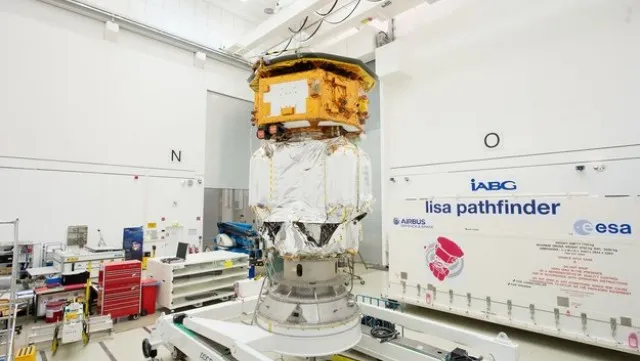Ready for space in search of gravity waves

LISA Pathfinder, an instrument that will measure elusive gravitational waves, is the detector that is anticipated to probe the Universe like never before. The space detector is currently proposed to leave Earth this November.
The featured image shows the last time that scientists could lay eyes on the instrument before it is packed away to be shipped to the launch site. LISA will likely be launched on a Vega rocket.
The space laboratory has been in the making for the past 10 years. In the meantime, LISA's ground-based partner, LIGO , has been searching for gravitational waves but to no avail. The observatory's lack of success doesn't mean that LISA's mission will fail, though, since they each listen out for different ranges of gravitational waves.
“Gravitational waves are an entirely fresh and different way to study the Universe, providing an important complement to the well-established approach of astronomy, based on observing the light emitted by celestial bodies,” says Paul McNamara, LISA Pathfinder's project scientist.
But what is a gravitational wave?
When you clap your hands together, you produce ripples in the air, or sound waves. Your ears respond to the frequency of sound waves produced and detect the clap. Similarly, gravitational waves are produced when objects with mass interact. But instead of moving through the air, gravitational waves are ripples in the fabric of space-time. And the ear will be LISA Pathfinder, who will hopefully 'hear' these tiny vibrations.
Only the most energetic events create gravitational waves - such as merging supermassive black holes, pulsars and exploding stars. Even the Sun isn't massive enough to produce gravitational waves.
Unlike a sound wave, gravitational waves are extremely difficult to detect: A gravitational wave creates fluctuations that are on the scale of an atom. This sensitivity demands some of the finest engineering minds of the century. Precision is everything. Even the spacecraft's own gravity has to be taken into account when calibrating the device.
These tiny waves will be detected by taking advantage of Earth's gravity as LISA orbits the Earth. The detector examines the distance between two blocks, a distance that should be predictable to a high precision. If a gravitational wave passes over the detector, the separation of these two blocks will change ever so slightly.
"This is an extremely challenging mission that will pave the way for future space-based projects to observe gravitational waves, opening a new window to explore the cosmos," said McNamara.
This spacecraft will add another sense to our instruments floating above the planet. Who knows what it might find. "Any supermassive black hole will be detectable by LISA wherever it is in the universe," commented Karsten Danzmann, who's been working on the project for a very long time, in an interview with the BBC .
"We've made great progress with LISA Pathfinder in the past decade and are very excited to be so close to operating this incredible physics laboratory in space," concludes Paul.
Tags:





